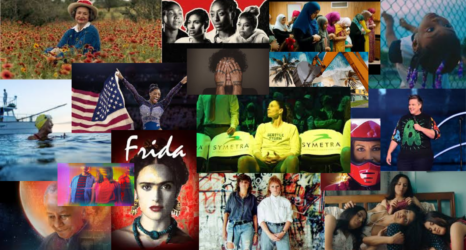America’s voter protection workers are volunteers who work to ensure that anyone eligible to vote is able to do just that. They guide themselves with a simple motto: “one person, one vote.” The latest documentary by director Anne De Mare and producer Elizabeth Hemmerdinger, the creative team behind The Homestretch and The Real Rosie the Riveter Project, tells their stories.
Capturing the Flag chronicles the stories of three voter protection workers—Laverne Berry, Steven Miller and Claire Wright—and the hundreds of voters they fought for in North Carolina before the 2016 election. Its premiere at the Full Frame Documentary Film Festival on April 8 comes only months before another pivotal election season—and will hopefully spark an important national dialogue about forming a more universal, and equal, application of voting rights across the country.
North Carolina is seen by candidates and political parties as a critical swing state and a constant battleground—but the story of its attacks on voters of color, in Capturing, becomes a much-needed exploration of voter suppression in a divided America. The stories of Berry, Miller and Wright, who were assigned as volunteers in Fayetteville, help bring the fight to life—and serve as eyes through which viewers see the human impact of voter suppression laws.
Following the Supreme Court’s 2013 ruling of Shelby County v. Holder, which gutted the landmark Voting Rights Act of 1965, North Carolina’s then-governor, Pat McCrory, signed HB 589 into law—a move seen by advocates as intentionally targeting African American voters in an effort to minimize their impact at the ballot box.
HB 589 limited early voting—a practice utilized by 64 percent of African American voters in 2012 and 60 percent in 2008. It ended valid opportunities to vote outside of one’s precinct—something African American voters were more likely to do on election day. And it imposed strict voter ID policies, requiring that voters show their drivers’ licenses at the polls and declaring public assistance cards ineligible substitutes. (Spoiler Alert: Public assistance cards, issued by the government, were disproportionately used by African American voters at the polls; the same voters tended not to possess licenses.)
Just months before the 2016 presidential election, a panel of three judges of the Fourth Circuit Court of Appeals in Richmond, Virginia struck down central aspects of the 2013 law on the basis that they harbored direct discriminatory intent. Judge Diana Motz contended that “the new provisions target African Americans with almost surgical precision.” Yet North Carolina, sometimes referred to as the “poster child” for modern-day voter suppression, remains a state with a highly contested sense of democracy concerning voting rights—and the degree to which the law impacted voting in the state is still impossible to concretely measure.
Stationed outside of a polling place on election day, the three volunteers do their best to help voters navigate the landscape after HB 589. A woman comes to them for help because she’s been turned away from three different polling stations. A man tells them the DMV lost his paperwork, and other voters submit provisional ballots because the DMV misplaced their registrations. Even though the voter ID law was not in effect, the volunteers are approached by a man who was turned away for not bringing his license. Others come forward to seek help because they’ve been illegally purged from the voter rolls.
The stories of these voters remind us that the heart of this fight is our shared human stake in our democracy—and Capturing the Flag serves both as a warning and a call to action to activists across the country who are ready to fiercely defend it.
Natasha Piñon is an Editorial Intern at Ms. and a junior at the University of Southern California, where she studies political science and journalism. She also writes for The Daily Trojan.





